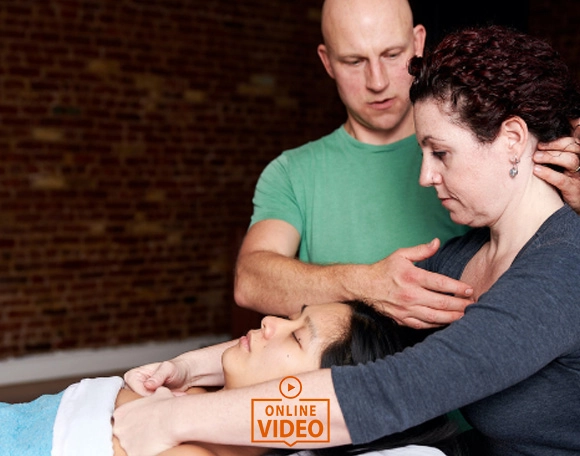Materials
- Online video - Approximately 11 hours
- Online manual - 92 pages
- Online multiple-choice test
- Certificate upon completion
Description
Refresh. Reinvent. Reignite Your Practice.
Massage therapy is a healing art — but even the most dedicated therapists can lose their spark. Maybe your sessions feel repetitive. Maybe you're noticing more fatigue or strain in your body. Or maybe you just want to feel excited about your work again.
The "Give a Great Massage Again" online course is your reset button.
You'll learn practical, powerful strategies to prevent burnout, restore confidence, and breathe new life into every massage you give.
Why This Course Matters
Too many massage therapists slip into routine without even realizing it. The result?
- Sessions that feel stale instead of inspired
- Physical strain that shortens careers
- Clients who don't feel truly engaged
This course helps you break free from repetition and return to the essence of massage — presence, connection, and effectiveness.
What You'll Learn
- Discover the #1 secret to preventing burnout and extending your massage career through mindful awareness.
- Why slowing down your strokes can speed up results for both you and your clients.
- The surprising benefits of using less oil — and how it deepens connection and effectiveness.
- Stop hurting your own body: learn how to stabilize your joints with ease instead of strain.
- "Pour" don't push: master the art of using body weight rather than muscle force.
- Tune in to yourself while tuning in to your client — a powerful shift that transforms every session.
- 30+ powerful techniques, one integrated flow: confidently deliver a full-body therapeutic massage.
- Timing is everything: adapt your massage to give clients both the broad relaxation they want and the focused work they need.
- Unlock the nervous system connection: understand how your touch influences both the musculoskeletal and autonomic systems.
- Lifting vs. pressing strokes: why "scooping" can create profound release most therapists overlook.
- Facilitate change, don't force it — and watch your results multiply.
- Avoid costly mistakes: know the cautions and contraindications for each technique so you can work safely with confidence.
This course is designed for
massage therapists of all levels who want to:
- Reignite their passion for massage therapy
- Learn new ways to protect their bodies while giving treatments
- Offer clients a more effective, personalized experience
- Build confidence and creativity in every session
Whether you've been practicing for two years or twenty, this course will help you fall in love with massage again.
Therapists who've applied these methods report:
- Greater client satisfaction and retention
- Reduced strain and injury
- Renewed excitement for their practice
Ready to Reignite Your Massage Practice?
Massage therapy is not just a job – it's a calling. Don't let routine or burnout steal your passion.
Course Objectives
- Explain the value of using mindful awareness during a session to prevent burnout and extend a massage career.
- Describe the physiological benefits of slowing massage strokes for both therapist and client.
- Analyze the effects of using less oil than typical during massage strokes on connection and effectiveness.
- Identify how to use just enough muscle contraction to stabilize their joints while working, without causing strain or injury.
- Apply the technique of "pouring" with body weight rather than "pushing" with excessive muscle effort in massage strokes.
- Evaluate the physical and mental benefits of attending to your own body while attending to a client.
- Integrate course techniques into a cohesive, hour-long full-body therapeutic massage.
- Adjust the timing of a full-body massage to provide general work where needed and focused attention on specific client-requested areas.
- Explain how massage strokes influence both the autonomic nervous system and the musculoskeletal system.
- Assess the value of combining “lifting” or “scooping” strokes with traditional downward strokes to enhance tissue release.
- Justify why facilitating shifts in a client’s body, rather than forcing them, improves session effectiveness.
- Identify cautions and contraindications for each of the course techniques, including post-surgery, pregnancy, and other special considerations.
Instructors

David Lobenstine, LMT
David M. Lobenstine has been a massage therapist, teacher, and writer for over a decade. He is a graduate of the Swedish Institute and Vassar College. He has worked in a variety of settings, from luxury spas to the US Open Tennis Tournament to a hospice to now, exclusively, his own private practice, Full Breath Massage. And he has developed and taught continuing education courses around the country, from the Swedish Institute to the AMTA National Convention. His aim, both with his clients and in his teaching, is to enhance self-awareness, so that we can do the things we love with efficiency and ease.
Mr. Lobenstine is the creator and instructor of Pour Don't Push, Working the Rib Cage, Using Your Thumbs Wisely, Approaching the Upper Body from All Angles, Approaching the Lower Body from All Angles, Using the Breath to Massage Better, and Give a Great Massage Again.
Back to Top



